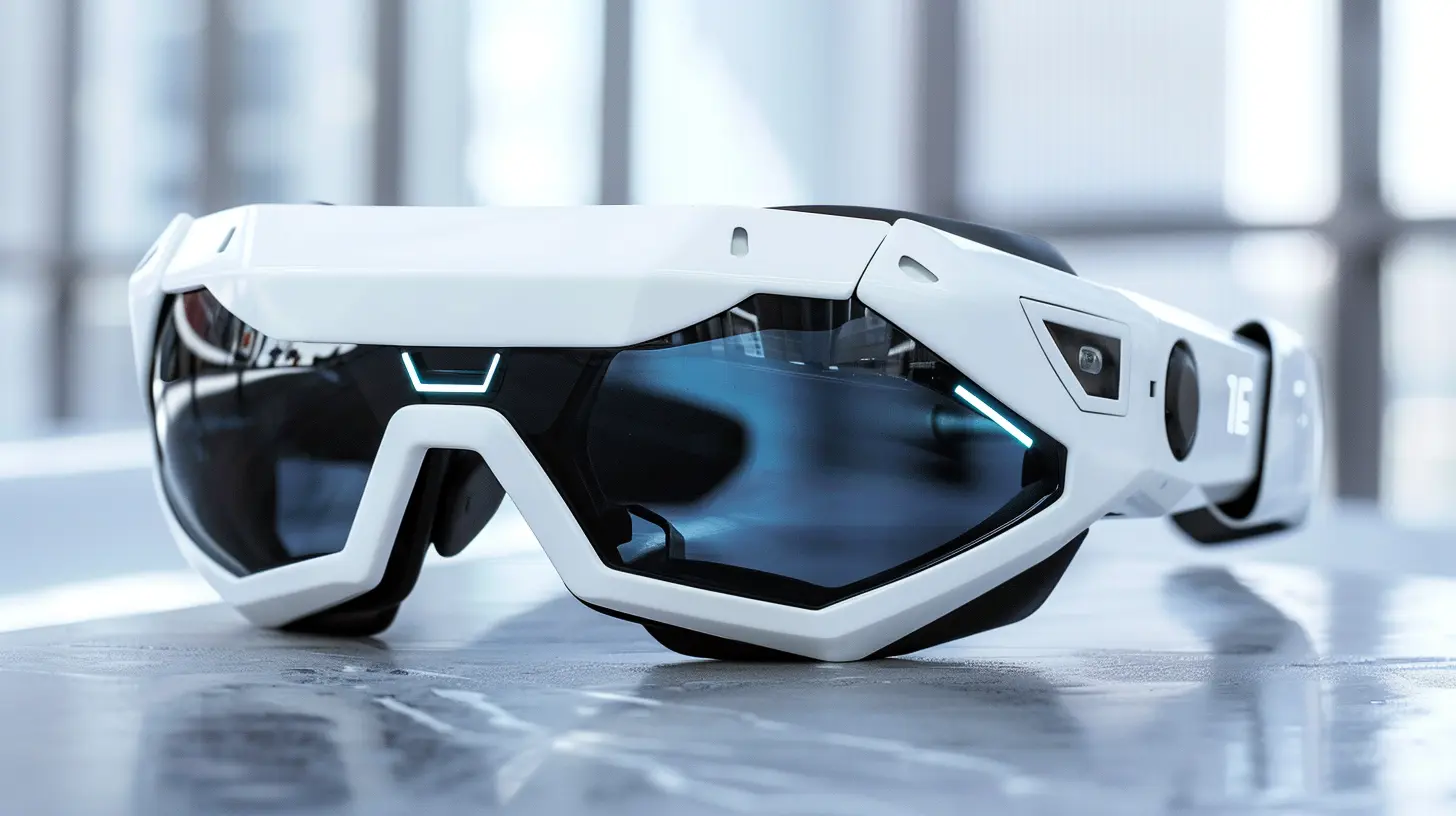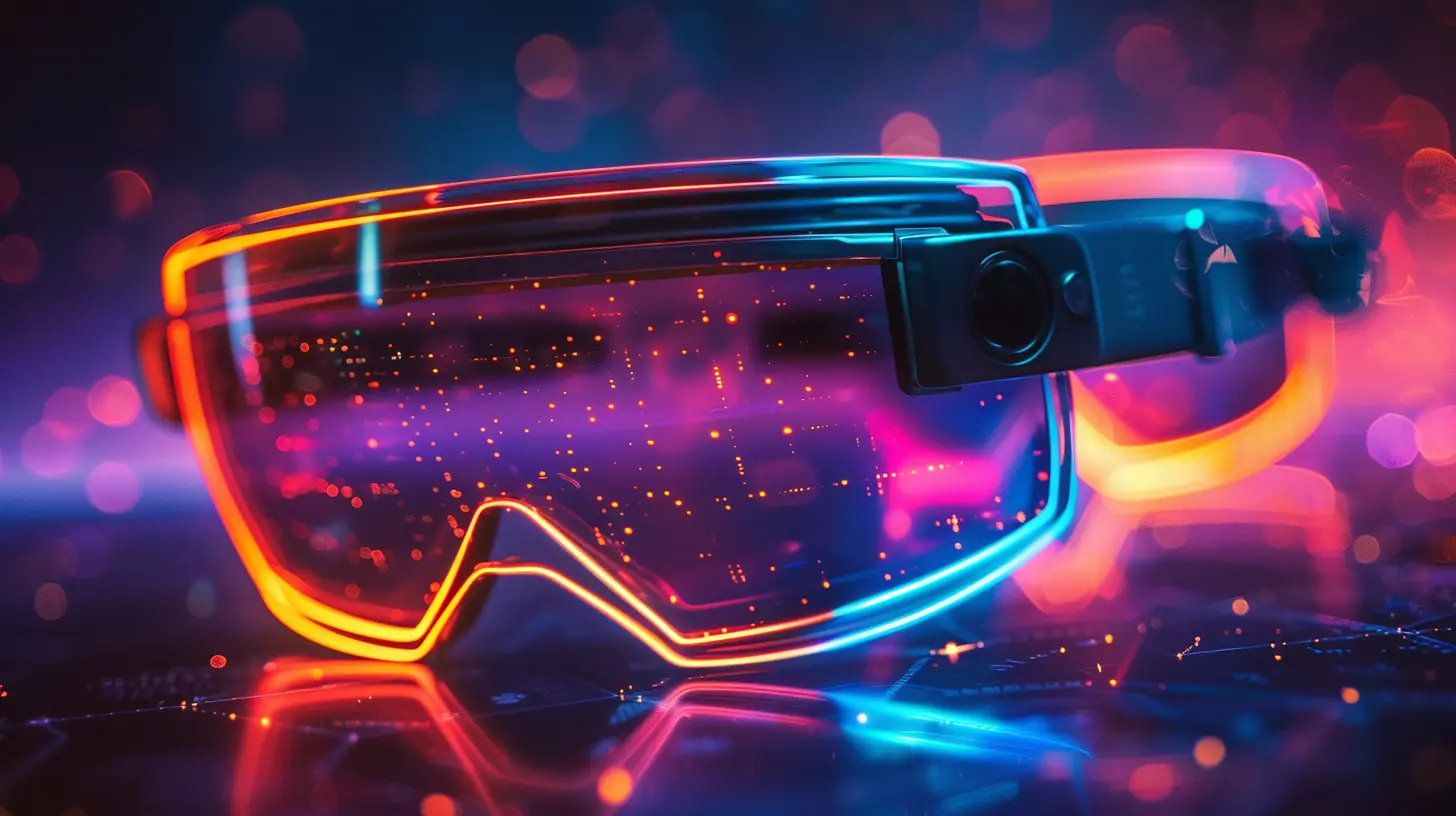The Future of Augmented Reality: How AR Glasses Are Changing the Game
26 May 2025
It feels like we’ve been hearing about augmented reality (AR) for years now, doesn’t it? But here’s the thing: it’s no longer just a buzzword or a futuristic concept stuck in the pages of sci-fi novels. AR is here, and it’s transforming how we interact with the world around us.
And the hottest innovation within AR? You guessed it—AR glasses. These sleek, futuristic spectacles are promising to change the game in ways we never thought possible. Whether you’re into gaming, education, business, or even healthcare, AR glasses are about to make everything more immersive, intuitive, and, well… cooler.
But what exactly are AR glasses, and how are they shaping the future? Let’s dive deep into how these gadgets are changing the tech landscape.

What Exactly Are AR Glasses?
Before we get too far ahead, let’s break down the basics. Augmented Reality glasses are wearable devices that overlay digital images, information, or objects onto the real world. Unlike virtual reality (VR), which immerses you in a completely digital environment, AR enhances your current surroundings by adding layers of interactive elements.Think of it as having a heads-up display (like in a video game or a fighter jet) right in front of your eyes, but without the bulky helmet. You’re still seeing the real world, but now with extra data, visuals, or even holograms seamlessly integrated into your view.
Does your fridge look empty? AR glasses can display a shopping list right in front of your eyes. Need directions? Street names and arrows can guide you as though they’re floating in the air. The possibilities are, quite literally, endless.

The Current State of AR Glasses
Now, to be clear, AR glasses aren’t exactly a brand-new concept. You might remember Google Glass from way back in 2013. While it didn’t quite take off (mostly because people thought it looked, well, kinda weird), it was an early attempt at blending the digital and physical worlds.Fast forward to today, and we’ve come a long way. Major players like Microsoft, Apple, and Facebook (now Meta) are all working on their own versions of AR glasses. Microsoft’s HoloLens is already being used in industries like healthcare and education, while tech insiders are buzzing about Apple’s anticipated Apple Glass release.
The tech is still evolving, but the applications we’ve seen so far are nothing short of impressive. And here’s the kicker: we’re just scratching the surface.

How AR Glasses Are Revolutionizing Industries
So, why all the hype? Well, AR glasses are set to revolutionize several key industries, and here’s how:1. Gaming and Entertainment
Let’s be real: this is one of the most exciting areas for AR. Imagine playing your favorite video game, but instead of staring at a screen, the game comes to life in your living room. That’s the promise of AR glasses in gaming.Take Pokémon GO to the next level. Instead of holding up your phone to see Pikachu, AR glasses will let you interact with the little guy as if he’s just standing right in front of you. It’s like turning your world into a living, breathing playground.
But it’s not just about gaming. AR glasses could transform how we watch movies, attend concerts, or even view sports events. Imagine sitting in your living room but feeling like you’re at a live concert with holograms of performers dancing around your space. Crazy, right?
2. Education
AR glasses are also poised to make learning way more interactive and fun. Think back to boring history lessons where you had to read about ancient civilizations in a textbook. Now imagine wearing AR glasses that bring ancient Rome to life, letting you walk through the streets and interact with historical figures.Whether it’s biology, chemistry, or art, AR glasses could give students immersive experiences that make learning more tangible. It’s like turning every classroom into an interactive museum.
3. Healthcare
The healthcare industry is already making strides with AR technology, and AR glasses could be a game-changer for doctors and surgeons. Imagine a surgeon performing a complex operation with real-time data and 3D visuals projected onto the patient, guiding them through the procedure with pinpoint precision. It’s like having a GPS for surgery.AR glasses could also be used for medical training, allowing students to practice procedures in a virtual, risk-free environment. And for patients, AR could help with everything from explaining diagnoses to improving mental health treatments through immersive, calming environments.
4. Business and Productivity
Remember those awkward Zoom meetings? AR glasses could make video conferencing a whole lot smoother. Instead of staring at a tiny screen, AR could project life-sized holograms of your colleagues sitting right across from you, making remote collaboration feel almost as natural as being in the same room.In industries like manufacturing and logistics, AR glasses can provide workers with real-time instructions, safety guidelines, and even help them troubleshoot issues without taking their eyes off the task.
For everyday productivity, AR glasses have the potential to replace traditional screens altogether. Your desktop, spreadsheets, and emails could float in front of you, accessible with a simple gesture or voice command. It’s like having your entire office right in front of your face—without the clutter.
5. Retail and Shopping
AR is already making waves in online shopping, but AR glasses take it a step further. Imagine trying on clothes without actually putting them on, or seeing how that new couch would look in your living room without leaving the store.Retailers could also use AR glasses to offer customers interactive shopping experiences, where they can see product info, reviews, and even virtual sales assistants right in front of them. Say goodbye to scrolling through endless online reviews—just look at a product, and all the details pop up in your line of sight.

What’s Holding AR Glasses Back?
Now, before we get too carried away, it’s important to note that AR glasses aren’t without their challenges. There are still some technical and social hurdles to overcome before we’re all wearing them.1. Battery Life
One of the biggest challenges for AR glasses is battery life. The more advanced the features, the more power they need. And right now, most AR glasses can only last a few hours before needing a charge. For AR glasses to become a daily driver, battery life needs to improve significantly.2. Design and Comfort
Let’s be honest: for AR glasses to become mainstream, they need to look good. No one wants to walk around wearing something that looks like a prop from a sci-fi movie. They also need to be lightweight and comfortable enough for people to wear all day.Companies are working on this, but it’s still a delicate balance between packing in all the tech while keeping the design sleek and stylish.
3. Privacy Concerns
Remember the controversy with Google Glass? People were worried about being recorded without their knowledge, and those concerns haven’t gone away. AR glasses, with their built-in cameras and sensors, raise legitimate privacy issues.How do we know we’re not being watched? What happens to the data that AR glasses collect? These are questions that manufacturers and regulators will need to address to ensure users’ privacy is protected.
4. Price
Right now, AR glasses don’t come cheap. Devices like Microsoft’s HoloLens can cost a few thousand dollars, making them out of reach for most consumers. For AR glasses to really take off, they’ll need to become more affordable. But like most technology, prices are likely to drop as the tech matures and more competitors enter the market.The Future: What’s Next for AR Glasses?
So, what does the future hold for AR glasses? Well, we’re on the cusp of a major tech revolution. If companies like Apple can crack the code on design, battery life, and affordability, AR glasses could become the next must-have gadget—on par with smartphones.In the next few years, you might not even need a phone. Your AR glasses could handle everything from calls to social media to browsing the internet, all while keeping your hands free.
And as AR technology continues to improve, the line between the digital and physical worlds will blur even further. Imagine a world where you can pull up a recipe while you’re cooking, see translations of foreign languages in real-time, or even play a game of virtual chess on your coffee table, all with the help of AR glasses.
It’s not a question of if AR glasses will change the game—it’s a question of when.
Conclusion
AR glasses are no longer just a concept—they’re a reality that’s quickly taking shape. From revolutionizing industries like gaming, healthcare, and education to transforming how we shop and work, AR glasses are set to become an integral part of our daily lives.Of course, there are challenges to overcome, like battery life, design, and privacy concerns. But if the rapid evolution of technology has taught us anything, it’s that these obstacles are only temporary. The future of AR glasses is bright, and soon enough, we might all be viewing the world through a digital lens.
So, are you ready to see the world in a whole new way?
all images in this post were generated using AI tools
Category:
Ar GlassesAuthor:

Jerry Graham
Discussion
rate this article
3 comments
Kylie Carr
Great insights! Excited to see how AR glasses will shape our daily experiences.
June 8, 2025 at 12:04 PM

Jerry Graham
Thank you! It's an exciting time for AR, and I can't wait to see the impact firsthand.
Liora Moore
This article beautifully highlights the transformative potential of AR glasses. It's exciting to think about how these innovations can enhance our daily lives and foster deeper connections with the world.
June 3, 2025 at 12:20 PM

Jerry Graham
Thank you! I'm glad you found the article inspiring. The potential of AR glasses is indeed remarkable, and I believe they will redefine our interactions with the world around us.
Micah Heath
AR glasses aren't just a trend; they're redefining how we interact with the world. Forget the skeptics—this technology is here to stay, revolutionizing everything from gaming to remote work. Embrace the future: immersive experiences will soon be as commonplace as smartphones. Get ready for a reality upgrade!
May 31, 2025 at 12:22 PM

Jerry Graham
Thank you for your insightful comment! AR glasses truly have the potential to transform our interactions and experiences across various fields. Exciting times ahead!



